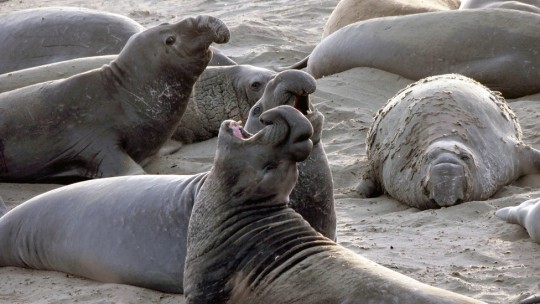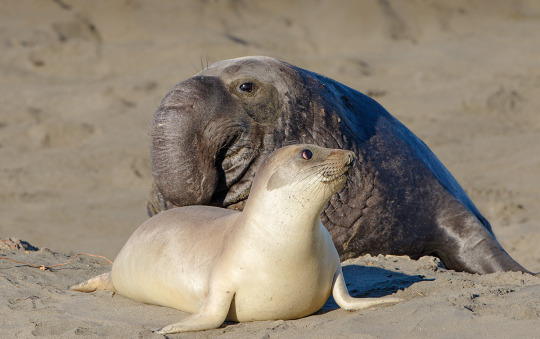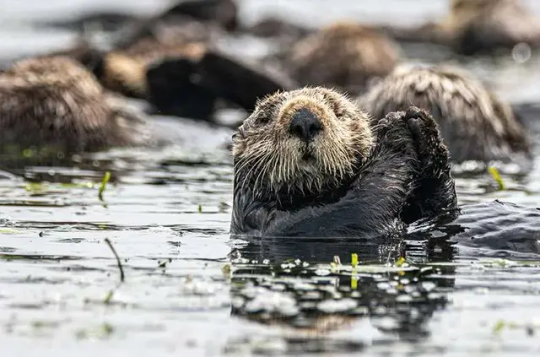#western and southern open
Link
2 notes
·
View notes
Text
Cincinnati MD R1: Jamie Murray/Michael Venus def. Nikola Cacic/Novak Djokovic 6-4, 6-2 Match Stats

📸 Tennis TV
J. Murray/M. Venus had a solid, convincing opening to their Cincinnati Masters campaign. Their intuitive play at the net not only created some of their 4 opportunities to break, but also converted 75% of them thanks to the additional pressure it caused on Cacic/Novak, who were not able to convert their 3 break point chances, most of which came from the first set (including the deciding point).
It did not stop in their return games. Landing 63% of their first serves, J. Murray/M. Venus had a strong showing from their first serves with a 87% winning percentage. It made sense that they sought after Cacic/Novak's second serves, with the Serbian pair having a 48% second serve winning rate despite both pairs double-faulting five times.
In the second set, the Menus will face the first seeds Wesley Koolhof/Neal Skupski, who received a bye to the second round. In this match, every element counts with a possibility of it being a close match (and a classic) as a result of being an early blockbuster on paper. A slight difference on balance, whether it came from the net or the baseline, would be extremely important. Definitely a recommended match to tune in to!
#atp world tour#atp tour#cincinnati m1000#cincinnati masters#western and southern open#tennis updates#match stats#jamie murray#michael venus#nikola cacic#novak djokovic#WatchMoreDOUBLES
0 notes
Text














#how to train your baby dragon: spanish edition#carlitos & juanki#carlos alcaraz#juan carlos ferrero#special spanish baby#tennis#gifs#vamos 😌❤️#I'm not even sorry anymore ffs#rip Albert's mental health#Western & Southern Open
142 notes
·
View notes
Text



[200823]
Carlos Alcaraz, Cincinnati Open Finalist, speaks after match against champion Novak Djokovic [7-5;6-7;6-7]:
[What are your feelings right now?] Carlos, laughing: exhausted. I feel, uh... no, I feel proud of myself. Honestly... I told him [ND], I don't- I don't know why I was crying 'cuz I fight until the last ball. I almost beat one of the greatest of all time, you know? From our sport!
You know it's... uh, it's crazy to talk about it right now, but you know, I love the court. Really, really happy with the- uh, what I did hmm, and of course I've been talking with my coach and my team, that we are so, so proud of ourselves.
#200823#carlos alcaraz#carlitos#tennis#cincinnati masters 1000#Western & Southern Open#cincinnati final#mine#gifs#I'm proud of you too baby boy#almost had an aneurysm tho
12 notes
·
View notes
Photo



Elevating the Elephant Seal
Found all along the Pacific coast, from Alaska to Antarctica, elephant seals are famous for their size, aggression, and unusual noses. There are two species of elephant seal, both belonging to the true seal family Phocidae. The northern elephant seal (Mirounga angustirostris), as its name suggests, is dispersed along the northern coasts of North America, from the American state of Alaska all the way down to Baja California in Mexico. Southern elephant seals (Mirounga leonina) reside in Antarctic and sub-Antarctic waters up to the southern most regions of Chile and Argentina in South America. Both species migrate twice a year. The rest of the year is spent foraging in the deep waters of the Arctic or Antarctic, respectively, and these trips can take anywhere from 10,000km to 20,000, making them one of the longest migrations of any marine mammal.
The main difference between northern and southern elephant seals is their size. A male northern elephant can weigh between 1,500 and 2,300kg, while females are much smaller at 400 to 900 kg. M. angustirostris also has a shorter nose than its southern cousin. M. leonina females are similar in size to the northern elephant seals, at 400 to 900 kg, but males can easily reach up to 4,000kg, making them the largest species of seal on the planet. Both elephant seal species are generally brown in color and have only a short, bristly coat of hair. They have no ears, distinguishing them from other pinnipids like sea lions. The males, or bulls, of both species also have pronounced nose called a proboscis which serves to amplify loud mating or threatening calls.
Elephant seals come ashore twice a year in groups called colonies. In the summer, individuals gather on land to go through a ‘catestrophic molt’. During this time, the fur and the top layer of skin peel from the body. This is a necessary process because when at sea, blood is not circulated to the skin in order to keep elephant seals warm. Because of this, they are also unable to grow new hair or skin continuously. When the outer layers of skin and hair wear down or become ragged, individuals travel to traditional breeding grounds and take a month to shed their outer layers and grow a new protective coat.
From December to March, dominant males congregate at breeding grounds to compete for mating rights. The bulls are very aggressive, and fight by slamming their bodies together and raking each other with their sharp canines. Once a bull has established dominance on a beach, other males typically leave, though some may try to sneak back in to mate when the alpha bull isn’t looking. Each dominant male controls a harem of 40 to 50 females. Each female, or cow, only gives birth to one or two pups after a gestation period of 10 to 12 months. Only a few days after giving birth, she is ready to mate again.
In the meantime, the mother nurses her pup almost constantly for about a month. During this time, the female does not leave the beach to search for food, and both she and the bulls lose up to a third of their body weight. After about a month the mother weans her pup off her milk. However, some pups are “super weaners” and will search out another female-- usually one who has lost her pup-- and nurse from her for as long as possible. This gives the pup a significant size advantage: pups that are successfully weaned at 6 weeks weigh only 160kg, while super weaners can weigh up to 270 kg. The advantage of being this big is in the blubber: elephant seals require large amounts of excess fat as an energy source when food is scarce and to keep them warm when they forage in the cold waters of the northern or southern Pacific Ocean. However, the effectiveness of this strategy for survival has yet to be fully determined. The average lifespan of M. angustirostris is 9 years, while M. leonina can live up to 21 years old, though in both species males tend to die much sooner than females.
Outside the molting and mating seasons, elephant seals spend up to 90% of their lives in the water, usually alone. Foraging migrations require long, deep dives into the cold Arctic or Antarctic oceans to search for squid, rays, small sharks, and schooling fish. Some of these dives are the deepest recorded for any non-cetacean mammal at up to 1,550m below the surface. To reach these depths, elephant seals can hold their breath for almost two hours, although the average length of a dive is 20-60 minutes. Due to their large size, adult elephant seals have few predators. Some sharks, like great white sharks (Carcharodon carcharias) and southern sleeper sharks (Somniosus antarcticus) will go after adults when desperate. More common is predation on elephant seal pups; killer whales (Orcinus orca), leopard seals (Hydrurga leptonyx), and New Zealand sea lions (Phocarctos hookeri) will all hunt young pups when no parents are nearby to defend them.
Conservation status: The IUCN has rated both elephant seal species as Least Concern. In the late 1800s, northern elephant seals were thought to be hunted to extinction but a population of 20-100 individuals was discovered on Guadalupe Island off Baja California. Southern elephant seals were also hunted, but to a lesser extent. M. angustirostris and M. leonina populations are now well in the hundreds of thousands, though the population of southern elephant seals is declining once more due to disruption of their primary food sources.
Photos
Taiki Adachi
Nick Ut
Steve Zamek
If you like what I do, consider buying me a ko-fi!
#northern elephant seal#southern elephant seal#carnivora#phocidae#elephant seals#seals#pinnipeds#carnivores#mammals#coasts#coastal mammals#open ocean#open ocean mammals#pelagic fauna#pelagic mammals#north america#western north america#south america#western south america#antarctica#pacific ocean
79 notes
·
View notes
Text
No matter how this ends, Novak Djokovic will be lying awake about serving for the match and doing a double fault instead
2 notes
·
View notes
Text
Congrats to Taylor and Alycia 🏆🏆🎾🎾

2 notes
·
View notes
Text

(Western & Southern Open (@CincyTennis) via Twitter)
19 notes
·
View notes
Text

August 2022 - Carlos Alcaraz at the Western & Southern Open. Cincinnati (Mason), Ohio.
5 notes
·
View notes
Text

☆ HELLO, STRANGER!
🌵 MATHIAS | WOLFGANG
🏜️ 25YO | HE/HIM | MALE
🌾 I FOLLOW FROM MY MAIN
☆ WESTERN/SOUTHERN GOTHIC FOCUSED

#yeehaw....#🏜️.txt#open to mutuals#western gothic#southern gothic#looking for mutuals#cowboy#outlaws#i'll probably reblog some rdr2 stuff on here as well#and western/cowboy/outlaw stuff in general teehee
1 note
·
View note
Link
0 notes
Text


📸 🎥 Tennis TV
Interestingly, the Menus had a more solid showing in the second set while taking advantage of Cacic/Novak's second serve situation. Most of these were thanks to M. Venus' successful volley contributions, which were listed as follows.
M. Venus closed a rally with a working volley to create their break point in the fourth game, where even if Novak saved one of those with a smash, it was insufficient due to Cacic's double fault. It resulted in the Menus' break of serve to 3-1 before they convincingly consolidated their serve (4-1). This further confirmed the importance of a functional net game and some second serves to back things up, hence the Menus stood out by then.
It took two other games before M. Venus opened the path with another volley that went in, setting themselves a point ahead before setting up the match point several points later in a similar way. However, Cacic's rushed forehand in an attempt to create +1 did not help, hence the Menus took the second set 6-2 and won the match altogether, consequently securing their second round berth in Cincinnati.
#atp world tour#atp tour#cincinnati m1000#cincinnati masters#western and southern open#tennis updates#break point#match point#nikola cacic#novak djokovic#jamie murray#michael venus#WatchMoreDOUBLES
0 notes
Text

#this team... this kid... I can't with them#Carlitos & Juanki#carlos alcaraz#juan carlos ferrero#special spanish baby#vamos 😌❤️#gifs#tennis#western & southern open
72 notes
·
View notes
Video
Petra Kvitova par WTB Gallery
Via Flickr :
Petra Kvitova of the Czech Republic after her quarterfinal match at the 2018 Western & Southern Open WTA Premier 5 tennis tournament
0 notes
Text
"Many people know about the Yellowstone wolf miracle. After wolves were reintroduced to the national park in the mid-1990s, streamside bushes that had been grazed to stubble by out-of-control elk populations started bouncing back. Streambank erosion decreased. Creatures such as songbirds that favor greenery along creeks returned. Nearby aspens flourished.
While there is debate about how much of this stemmed from the wolves shrinking the elk population and how much was a subtle shift in elk behavior, the overall change was dramatic. People were captivated by the idea that a single charismatic predator’s return could ripple through an entire ecosystem. The result was trumpeted in publications such as National Geographic.
But have you heard about the sea otters and the salt marshes? Probably not.
It turns out these sleek coastal mammals, hunted nearly to extinction for their plush pelts, can play a wolf-like role in rapidly disappearing salt marshes, according to new research. The findings highlight the transformative power of a top predator, and the potential ecosystem benefits from their return.
“It begs the question: In how many other ecosystems worldwide could the reintroduction of a former top predator yield similar benefits?” said Brian Silliman, a Duke University ecologist involved in the research.
The work focused on Elk Slough, a tidal estuary at the edge of California’s Monterey Bay. The salt marsh lining the slough’s banks has been shrinking for decades. Between 1956 and 2003, the area lost 50% of its salt marshes.
Such tidal marshes are critical to keeping shorelines from eroding into the sea, and they are in decline around the world. The damage is often blamed on a combination of human’s altering coastal water flows, rising seas and nutrient pollution that weakens the roots of marsh plants.
But in Elk Slough, a return of sea otters hinted that their earlier disappearance might have been a factor as well. As many as 300,000 sea otters once swam in the coastal waters of western North America, from Baja California north to the Aleutian Islands. But a fur trade begun by Europeans in the 1700s nearly wiped out the animals, reducing their numbers to just a few thousand by the early 1900s. Southern sea otters, which lived on the California coast, were thought to be extinct until a handful were found in the early 1900s.
In the late 1900s, conservation organizations and government agencies embarked on an effort to revive the southern sea otters, which remain protected under the Endangered Species Act. In Monterey Bay, the Monterey Bay Aquarium selected Elk Slough as a prime place to release orphaned young sea otters taken in by the aquarium.
As the otter numbers grew, the dynamics within the salt marsh changed. Between 2008 and 2018, erosion of tidal creeks in the estuary fell by around 70% as otter numbers recovered from just 11 animals to nearly 120 following a population crash tied to an intense El Niño climate cycle.
While suggestive, those results are hardly bulletproof evidence of a link between otters and erosion. Nor does it explain how that might work.
To get a more detailed picture, the researchers visited 5 small tidal creeks feeding into the main slough. At each one, they enclosed some of the marsh with fencing to keep out otters, while other spots were left open. Over three years, they monitored the diverging fates of the different patches.
The results showed that otter presence made a dramatic difference in the condition of the marsh. They also helped illuminate why this was happening. It comes down to the otters’ appetite for small burrowing crabs that live in the marsh.

Adult otters need to eat around 25% of their body weight every day to endure the cold Pacific Ocean waters, the equivalent of 20 to 25 pounds. And crabs are one of their favorite meals. After three years, crab densities were 68% higher in fenced areas beyond the reach of otters. The number of crab burrows was also higher. At the same time, marsh grasses inside the fences fared worse, with 48% less mass of leaves and stems and 15% less root mass, a critical feature for capturing sediment that could otherwise wash away, the scientists reported in late January in Nature.
The results point to the crabs as a culprit in the decline of the marshes, as they excavate their holes and feed on the plant roots. It also shows the returning otters’ potential as a marsh savior, even in the face of rising sea levels and continued pollution. In tidal creeks with high numbers of otters, creek erosion was just 5 centimeters per year, 69% lower than in creeks with fewer otters and a far cry from earlier erosion of as much as 30 centimeters per year.
“The return of the sea otters didn’t reverse the losses, but it did slow them to a point that these systems could restabilize despite all the other pressures they are subject to,” said Brent Hughes, a biology professor at Sonoma State University and former postdoctoral researcher in Silliman’s Duke lab.
The findings raise the question of whether other coastal ecosystems might benefit from a return of top predators. The scientists note that a number of these places were once filled with such toothy creatures as bears, crocodiles, sharks, wolves, lions and dolphins. Sea otters are still largely absent along much of the West Coast.
As people wrestle to hold back the seas and revive their ailing coasts, a predator revival could offer relatively cheap and effective assistance. “It would cost millions of dollars for humans to rebuild these creek banks and restore these marshes,” Silliman said of Elk Slough. “The sea otters are stabilizing them for free in exchange for an all-you-can-eat crab feast.”"
-via Anthropocene Magazine, February 7, 2024
#otters#sea otters#conservation#erosion#coastal erosion#coastline#marshes#saltwater#marine science#marine biology#marine animals#sea creatures#ocean#sustainability#soil erosion#erosion control#crab#good news#hope
3K notes
·
View notes
Text
Western and southern open map

They push the surface waters out to sea and bring deeper, cooler waters up to the seaside. When the Mistral and the Tramontane are blowing, this provokes an "upwelling" phenomenon on the French coast. And, conversely, the Alps and the Pyrenees protect the Italian and Iberian peninsulas from the rains and icy winds from the south of France such as the Mistral and the Tramontane. The Alps prevent the Sirocco from spreading to the rest of Europe. So, the Sirocco hot wind that originates in the heart of the Sahara blows over Italy, going up to the interior of the Alpine arc ( Po Valley). The location of these peninsulas in the heart of the Mediterranean Sea, as well as their mountainous reliefs, provide them with very different types of climates (mainly subtropical Mediterranean) from the rest of the continent. These three peninsulas are separated from the rest of Europe by towering mountain ranges, respectively by the Pyrenees, the Alps and the Balkan Mountains. These are the Iberian Peninsula, the Apennine Peninsula, and the Balkan Peninsula. Southern Europe is focused on the three peninsulas located in the extreme south of the European continent. Definitions of Southern Europe include some or all of these countries and regions: Albania, Andorra, Bosnia and Herzegovina, Bulgaria, Croatia, Cyprus, Turkey ( East Thrace), Gibraltar, Greece, Italy, Kosovo, Malta, Monaco, Montenegro, North Macedonia, Portugal, Romania, San Marino, Serbia, Slovenia, Southern France, Spain, and Vatican City (the Holy See). It is also known as Mediterranean Europe, as its geography is essentially marked by the Mediterranean Sea. Southern Europe is the southern region of Europe. The geographical and ethno-cultural borders of Southern Europe are the Pyrenees, the Alps, and the Balkan Mountains to the north and the Mediterranean Sea to the south.

0 notes
